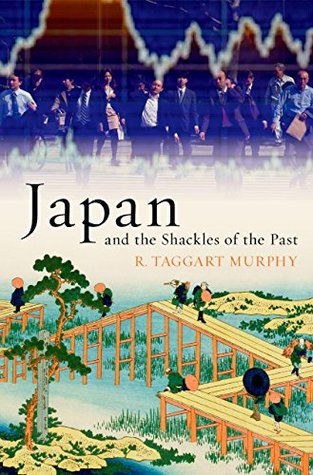More on this book
Kindle Notes & Highlights
Read between
May 21 - June 12, 2017
who the real decision makers are and how they came to have the power to determine the way other people lead their lives.
Lafcadio Hearn, Kurt Singer, Ian Buruma, and, above all, the late Donald Richie—
The levels of politeness and service one encounters in Japan, even when the most minor—or, truth be told, tawdry—of transactions are involved, are so far beyond what one is used to elsewhere that at times one can fall into a kind of reverie that suggests the entire world has been arranged for one’s pleasure.
But this resolute refusal to notice contradictions—to act as if everything were the way it should be even when everything isn’t—has a key political dimension that is often overlooked. It may be the source of what makes Japan so alluring and successful; it also, as I noted above, explains much of the tragedy of modern Japanese history.
Japan has remained Japan. But in the rest of the world, ruling elites have become more Japanese in at least this one crucial respect: learning to live with the constant presence of contradiction while perfecting the mental gymnastics necessary to deceive oneself about motive while still acting on that motive.
Japan’s Imperial Institution is the oldest hereditary monarchy in the world; among political institutions that survive to this day, only the papacy is demonstrably older.
the choice of the European word “emperor” was misplaced, derived as the word is from Imperator the military designation given to Roman supreme commanders (i.e., military rulers of groups of nations that form an empire).
Japan’s first permanent capital was established at Nara in 710—
Modeled on Chang’An (now Xi’an), the capital of Tang dynasty China and then the largest city in the world,
Nara formed Japan’s first real city, boasting a population of some 200,000 within a few decades of its founding.
the ruling clans settled in 794 on a well-watered valley surrounded on three sides by mountains for their new capital city. They named it Heian-kyō—Capital of Heavenly Peace—although in later years it came to be known simply as Kyōto, literally, Capital City.
that, of course, is perhaps the ultimate reason why Heian matters: its artistic legacy.
According to legend, the kana were invented by Kobo Daishi (774–835), a Buddhist monk who had been the abbot of the Tōdai-ji.
One of the hoariest of Japanese cultural archetypes is the noble loser who fights on against hopeless odds, sustained only by loyalty and the purity of his devotion to the cause for which he is dying.
Yoshitsune, meanwhile, is the archetypal doomed bishōnen or beautiful boy who dies young precisely because of his purity and virtue
Shogunate.
(whenever the “p” or “b” sound crops up in the middle of a place name—Sapporo/Beppu—you probably have an Ainu or Emishi root)
Hojo Masako was arguably the single most politically powerful woman in Japanese history; she effectively ruled the country until her own death in 1225;
the Japanese punctured the myth of Mongol invincibility
in 1392 and Japan was again ruled from a single capital—Kyoto—
Japan was becoming a feudal country where real power was increasingly exercised by regional war lords rather than a central court or courts.
lords were called daimyō,
fiefs or domains were known as han,
“monarch” to whom they pledged nominal allegiance...
This highlight has been truncated due to consecutive passage length restrictions.
spiritual/legitimizing power was held b...
This highlight has been truncated due to consecutive passage length restrictions.
Most of Japan’s regional capitals—Sendai, Hiroshima, Kochi, Kagoshima, Fukuoka—got their start as the han seats of their respective daimyō.
The cultural hegemony of Kyoto continued unchecked; indeed it would not be seriously challenged until the founding of the Tokugawa Shogunate in 1603 and the rise of Edo, now known as Tokyo.
Perhaps the most important catalyst in this aesthetic transformation was a Chinese import: Zen Buddhism.
Japanese pirates had become an increasing problem for China; the devastation they caused and the fear they invoked on the Chinese coast have been compared to terror of the Viking raids in Europe.
Zen would effectively become the samurai religion.
three great lords who succeeded finally in reimposing central authority on the entire country, thereby laying the foundations of the modern Japanese state.
Oda Nobunaga
Toyotomi Hideyoshi,


